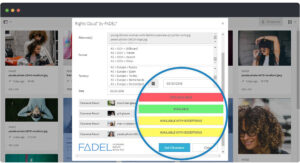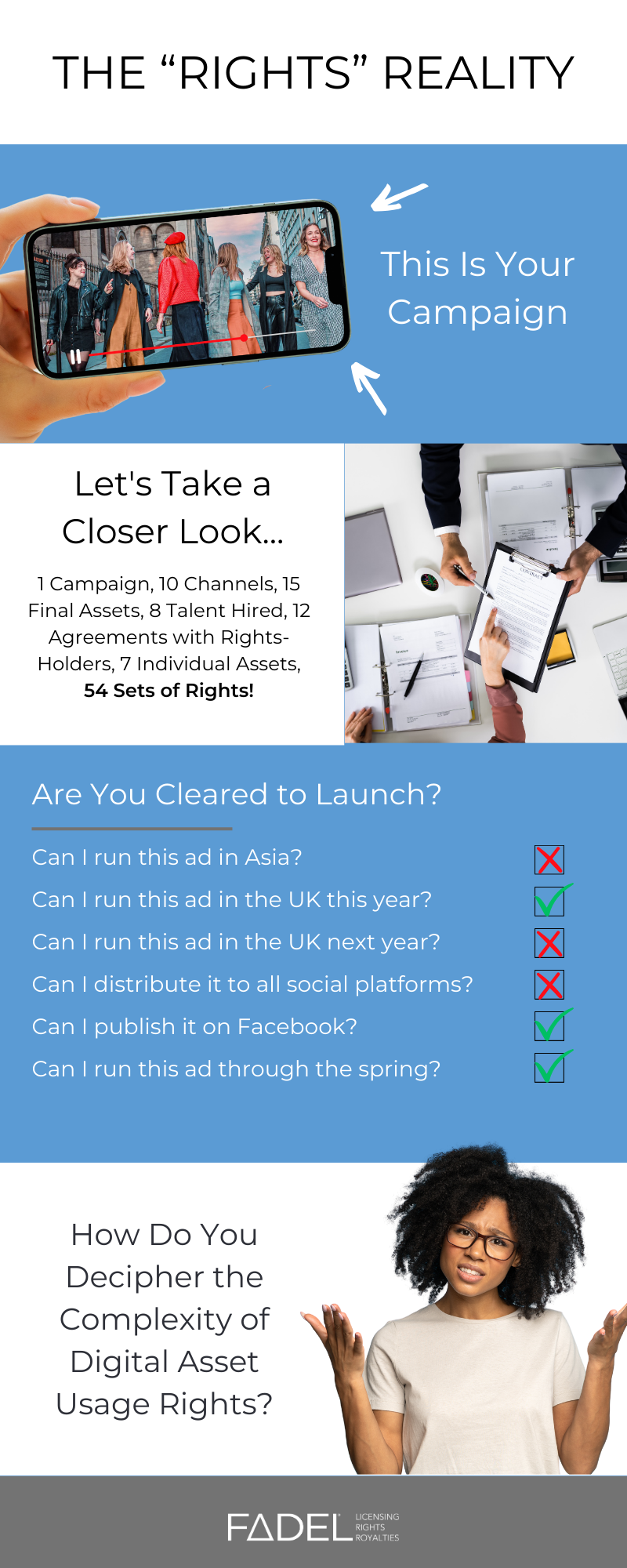
DRM vs DAM Metadata: Overcoming Rights Management Challenges
For most companies, the biggest challenge in managing digital assets is visibility. In order to manage digital assets effectively, you need to know what you own, which is where a digital asset management system (DAM) comes into play. But you also need to have visibility into the terms under which you can use what you own. This entails connecting assets to their contracts and usage rights, which define terms of use, such as timeframes an asset can be used, as well as on what channels, in which regions, and any usage obligations. This goes beyond the capabilities of most DAM systems, bringing the business case for a digital rights management (DRM) platform – DRM vs DAM metadata – to the forefront.
The Growing Complexities of Digital Asset Management
Several decades ago, an image may have been purchased for a single-channel marketing campaign, for example a billboard. In today’s omnichannel world, the same asset most likely will be used across television commercials, email campaigns, websites, apps, social platforms, billboards, magazine ads, and point-of-purchase displays. Since many companies have thousands or even tens of thousands of assets in their DAM, each with specific parameters that are tied to channel usage, one or more talent agreements, timeframes, regions, and so forth, the level of complexity for managing all those parameters has become extreme. If all of the contractual terms aren’t clearly visible in your DAM, improper usage could incur fines due to infringement of rights, restrictions, or payment terms.
The Limitations of DAM Metadata to Manage Rights
The market for DAM solutions is growing at a brisk rate of nearly 30% annually, which reflects that more and more organizations are seeing the need for a centralized storage system to house their growing library of digital assets. However, most DAMs are not designed to store complex rights or contract data, which is essential to figuring out how you can use your assets.
The workaround many have been using is to put rights information in an asset’s metadata. If rights were as simple as specifying a single expiration date or all territories okay for use, the asset metadata fields might be sufficient for tracking rights, but rights have become much more complex.
As digital media has evolved, the ability to accommodate more complex definitions of digital assets, for example multifaceted rights, is beyond the pay grade of a DAM’s metadata fields. A DAM’s data model wasn’t designed or intended to handle complex rights data; it was designed for simple descriptive information and identifiers that could be filtered for and searched—and describing and identifying today’s assets—let alone their usage rights—is anything but simple. They just don’t fit into the cookie-cutter fields of a DAM’s metadata, resulting in the need for DAM + digital rights management systems (DRM).
Why a DAM + DRM System is the “Rights” Choice
DRM systems were specifically developed to handle the “next generation” of digital assets, which began to proliferate decades ago. These systems can handle matrixed models, such as territories where the asset can be used, time-based factors such as differing expiration dates for where the asset can be used, as well as durations of use, embargos, and restrictions. A DRM system links rights and terms of use for the assets housed in your DAM, saving considerable time and allowing you to maximize the value of your investments while minimizing the risk of misuse.
A modern DRM solution is built on a data model that supports:
- Compound rights definitions that tie multiple assets together in order to derive rights clearance at an aggregate level based on component rights.
- Multi-dimensional rights configuration, which allows for a particular right to be tied to a series of uses or methods, e.g., “Print rights for billboards in the U.S. and Canada” but “Digital rights in all territories but not for broadcast.”
- Date restrictions allowing users to easily identify usage rights in relation to specific formats, territories, and channels during specific date ranges.
- Financial and other obligations tied to usage, e.g., product combinations, distribution channels, territories, etc.
- Contracts providing visibility into rights and inheritance of rights across associated assets, making asset rights information easier to maintain.
- Scale – because if there is one thing that is certain, the volume of your digital assets will continue to increase.
A bonus to this type of data model? The hierarchical structure also informs operations, allowing for higher levels of security, more detailed reporting, and categorized revenue recognition.
Digital Rights Clearance Check
 Once you have a complete inventory and understanding of the IP in your organization and it is linked to the associated contract rights, restrictions, and payment terms, the logical next step is asset rights clearance functionality that makes rights and terms of use transparent.
Once you have a complete inventory and understanding of the IP in your organization and it is linked to the associated contract rights, restrictions, and payment terms, the logical next step is asset rights clearance functionality that makes rights and terms of use transparent.
Additionally, it may be worthwhile to empower asset rights clearance functionality across the marketing workflow to ensure the proper checks and balances are in place. This could include the DAM, creative tools, the PIM, social media tools, and workflow or project management tools.
Master Your Command of Digital Assets
Companies that can unlock the potential of their assets will be positioned to take full advantage of the digital media transformation that is occurring in the marketplace and succeed in delivering more content in more ways to generate increasing revenue. FADEL’s notion of digital brand compliance encompasses all the moving parts that contribute to an agency or brand mastering their command of digital assets.
For more information on how excellence in rights management is vital to DAM success, watch our webcast “Rights-Capture, Clearance, Compliance and more!” on demand or request a 1:1 demo.










